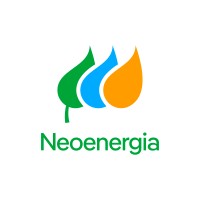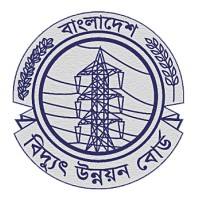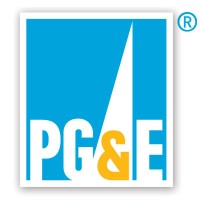
Upper Peninsula Power Company Company Cyber Security Posture
uppco.comUpper Peninsula Power Company (UPPCO) is a regulated electric utility delivering safe, reliable energy to approximately 54,000 customers in 10 counties across Michigan's Upper Peninsula. UPPCO's company assets include seven hydroelectric renewable energy generation facilities that also offer public recreational opportunities on land and water and two combustion turbines providing a total generation capacity of approximately 80 megawatts, as well as 3,300 miles of electric distribution lines and 58 distribution substations. Upper Peninsula Power Company is proud to be a community supporter in the areas it serves. Visit us on Twitter @uppco for outage updates.
UPPC Company Details
upperpeninsulapowerco
102 employees
1235.0
221
Utilities
uppco.com
Scan still pending
UPP_7912175
In-progress
Between 800 and 900
This score is AI-generated and less favored by cyber insurers, who prefer the TPRM score.
 UPPC Global Score
UPPC Global Score.png)

Upper Peninsula Power Company Company Scoring based on AI Models
| Model Name | Date | Description | Current Score Difference | Score |
|---|---|---|---|---|
| AVERAGE-Industry | 03-12-2025 | This score represents the average cybersecurity rating of companies already scanned within the same industry. It provides a benchmark to compare an individual company's security posture against its industry peers. | N/A | Between 800 and 900 |
Upper Peninsula Power Company Company Cyber Security News & History
| Entity | Type | Severity | Impact | Seen | Url ID | Details | View |
|---|---|---|---|---|---|---|---|
| Upper Peninsula Power Company | Breach | 60 | 4 | 12/2022 | UPP231121222 | Link | |
Rankiteo Explanation : Attack with significant impact with customers data leaksDescription: Upper Peninsula Power Company (“UPPCO”) suffered a data breach after an unauthorized party accessed sensitive consumer information by gaining access to its computer network. The breach compromised the first and last names and Social Security numbers. UPPCO sent out data breach letters to all affected parties, informing them of the incident and further steps to protect themselves. | |||||||
Upper Peninsula Power Company Company Subsidiaries

Upper Peninsula Power Company (UPPCO) is a regulated electric utility delivering safe, reliable energy to approximately 54,000 customers in 10 counties across Michigan's Upper Peninsula. UPPCO's company assets include seven hydroelectric renewable energy generation facilities that also offer public recreational opportunities on land and water and two combustion turbines providing a total generation capacity of approximately 80 megawatts, as well as 3,300 miles of electric distribution lines and 58 distribution substations. Upper Peninsula Power Company is proud to be a community supporter in the areas it serves. Visit us on Twitter @uppco for outage updates.
Access Data Using Our API

Get company history
.png)
UPPC Cyber Security News
Midwestern telco Cellcom confirms cyber incident after days of service outages
Cellcom CEO Brighid Riordan said the company has been dealing with a “cyber incident” but they “simply don't have a lot of facts.”
Kewadin Casinos to reopen beginning Wednesday
The Sault Ste. Marie Tribe of Chippewa Indians announced Tuesday it will reopen Kewadin Casinos on Wednesday.
Kewadin Casinos To Reopen Beginning February 26, 2025
Kewadin Casinos will begin welcoming guests back on Wednesday, Feb. 26. Following a cyberattack earlier this month, Kewadin Casinos has restored its systems ...
PowerSchool hack exposes student, teacher data from K-12 districts
PowerSchool has confirmed it suffered a cybersecurity incident that allowed a threat actor to steal the personal information of students and teachers from ...
Global technology outage impacts flights, health care systems in Michigan
A massive global technology outage Friday has disrupted computers at several hospitals, police phone lines and operations at Detroit border ...
Former Wyoming CIO Bill Vajda named director of Michigan cyber institute
Bill Vajda, the former CIO of Alaska and Wyoming, is now the director of the Upper Peninsula Cybersecurity Institute at Northern Michigan ...
Maine firm brings cybersecurity know-how to Marquette
The Northcross Group (NCG), a cybersecurity firm based in Portland, Maine, has come to Marquette to help Northern Michigan University (NMU) ...
Much-Watched Reciprocating Engine Hydrogen Pilot Kicks Off at Michigan Power Plant
A landmark project to test fuel blends of up to 25% volume of hydrogen mixed with natural gas in reciprocating internal combustion engines ...
U.S. government and energy firms close ranks, fearing Russian cyberattacks
“Russian malicious cyber actors have posed a high threat to the U.S. government and the critical infrastructure since before the invasion of ...

UPPC Similar Companies

Neoenergia
Somos uma companhia de capital aberto com ações (NEOE3) negociadas na Bolsa de Valores de São Paulo. Parte do grupo espanhol Iberdrola, atuamos no Brasil desde 1997, e atualmente, somos uma das líderes do setor elétrico do país. Estamos presentes em 18 estados e no Distrito Federal, com negócios em

Bangladesh Power Development Board (BPDB)
Bangladesh Power Development Board (BPDB) is a statutory body established on May 1, 1972 by the Presidential Order No. 59 bifurcating erstwhile Bangladesh Water and Power Development Authority (WAPDA). BPDB was formed as an integrated utility with the responsibility of power generation, transmission

Xcel Energy
As a leading electric and natural gas energy company, we offer a comprehensive portfolio of energy-related products and services to 3.4 million electricity customers and 1.9 million natural gas customers across our eight states: Colorado, Michigan, Minnesota, New Mexico, North Dakota, South Dakota,

Xunta de Galicia
A Xunta aparece definida no Estatuto de Autonomía, aprobado en 1981, como órgano colexiado do Goberno de Galicia. Na actualidade, a Xunta está composta polo presidente e dez conselleiros. A comunidade exerce as súas funcións administrativas a través da Xunta e dos seus entes e órganos dependentes.

Pacific Gas and Electric Company
Pacific Gas and Electric Company, incorporated in California in 1905, is one of the largest combination natural gas and electric utilities in the United States. Based in San Francisco, the company is a subsidiary of PG&E Corporation. There are approximately 20,000 employees who carry out Pacific

Southern Company
Together with our subsidiaries, we deliver clean, safe, reliable and affordable energy to our 9 million customers. Our focus is doing so with service excellence. That means we are leaders who take action to meet our customers’ and communities’ needs while advancing our commitment to net zero emiss

Frequently Asked Questions (FAQ) on Cybersecurity Incidents
UPPC CyberSecurity History Information
Total Incidents: According to Rankiteo, UPPC has faced 1 incidents in the past.
Incident Types: The types of cybersecurity incidents that have occurred include ['Breach'].
Total Financial Loss: The total financial loss from these incidents is estimated to be {total_financial_loss}.
Cybersecurity Posture: The company's overall cybersecurity posture is described as Upper Peninsula Power Company (UPPCO) is a regulated electric utility delivering safe, reliable energy to approximately 54,000 customers in 10 counties across Michigan's Upper Peninsula. UPPCO's company assets include seven hydroelectric renewable energy generation facilities that also offer public recreational opportunities on land and water and two combustion turbines providing a total generation capacity of approximately 80 megawatts, as well as 3,300 miles of electric distribution lines and 58 distribution substations. Upper Peninsula Power Company is proud to be a community supporter in the areas it serves. Visit us on Twitter @uppco for outage updates..
Detection and Response: The company detects and responds to cybersecurity incidents through {description_of_detection_and_response_process}.
Incident Details
Incident 1: Ransomware Attack
Title: {Incident_Title}
Description: {Brief_description_of_the_incident}
Date Detected: {Detection_Date}
Date Publicly Disclosed: {Disclosure_Date}
Date Resolved: {Resolution_Date}
Type: {Type_of_Attack}
Attack Vector: {Attack_Vector}
Vulnerability Exploited: {Vulnerability}
Threat Actor: {Threat_Actor}
Motivation: {Motivation}
Incident 2: Data Breach
Title: {Incident_Title}
Description: {Brief_description_of_the_incident}
Date Detected: {Detection_Date}
Date Publicly Disclosed: {Disclosure_Date}
Date Resolved: {Resolution_Date}
Type: {Type_of_Attack}
Attack Vector: {Attack_Vector}
Vulnerability Exploited: {Vulnerability}
Threat Actor: {Threat_Actor}
Motivation: {Motivation}
Common Attack Types: As of now, the company has not encountered any reported incidents involving common cyberattacks.
Identification of Attack Vectors: The company identifies the attack vectors used in incidents through {description_of_identification_process}.
Impact of the Incidents
Incident 1: Ransomware Attack
Financial Loss: {Financial_Loss}
Data Compromised: {Data_Compromised}
Systems Affected: {Systems_Affected}
Downtime: {Downtime}
Operational Impact: {Operational_Impact}
Conversion Rate Impact: {Conversion_Rate_Impact}
Revenue Loss: {Revenue_Loss}
Customer Complaints: {Customer_Complaints}
Brand Reputation Impact: {Brand_Reputation_Impact}
Legal Liabilities: {Legal_Liabilities}
Identity Theft Risk: {Identity_Theft_Risk}
Payment Information Risk: {Payment_Information_Risk}
Incident 2: Data Breach
Financial Loss: {Financial_Loss}
Data Compromised: {Data_Compromised}
Systems Affected: {Systems_Affected}
Downtime: {Downtime}
Operational Impact: {Operational_Impact}
Conversion Rate Impact: {Conversion_Rate_Impact}
Revenue Loss: {Revenue_Loss}
Customer Complaints: {Customer_Complaints}
Brand Reputation Impact: {Brand_Reputation_Impact}
Legal Liabilities: {Legal_Liabilities}
Identity Theft Risk: {Identity_Theft_Risk}
Payment Information Risk: {Payment_Information_Risk}
Average Financial Loss: The average financial loss per incident is {average_financial_loss}.
Commonly Compromised Data Types: The types of data most commonly compromised in incidents are {list_of_commonly_compromised_data_types}.
Incident 1: Ransomware Attack
Entity Name: {Entity_Name}
Entity Type: {Entity_Type}
Industry: {Industry}
Location: {Location}
Size: {Size}
Customers Affected: {Customers_Affected}
Incident 2: Data Breach
Entity Name: {Entity_Name}
Entity Type: {Entity_Type}
Industry: {Industry}
Location: {Location}
Size: {Size}
Customers Affected: {Customers_Affected}
Response to the Incidents
Incident 1: Ransomware Attack
Incident Response Plan Activated: {Yes/No}
Third Party Assistance: {Yes/No}
Law Enforcement Notified: {Yes/No}
Containment Measures: {Containment_Measures}
Remediation Measures: {Remediation_Measures}
Recovery Measures: {Recovery_Measures}
Communication Strategy: {Communication_Strategy}
Adaptive Behavioral WAF: {Adaptive_Behavioral_WAF}
On-Demand Scrubbing Services: {On_Demand_Scrubbing_Services}
Network Segmentation: {Network_Segmentation}
Enhanced Monitoring: {Enhanced_Monitoring}
Incident 2: Data Breach
Incident Response Plan Activated: {Yes/No}
Third Party Assistance: {Yes/No}
Law Enforcement Notified: {Yes/No}
Containment Measures: {Containment_Measures}
Remediation Measures: {Remediation_Measures}
Recovery Measures: {Recovery_Measures}
Communication Strategy: {Communication_Strategy}
Adaptive Behavioral WAF: {Adaptive_Behavioral_WAF}
On-Demand Scrubbing Services: {On_Demand_Scrubbing_Services}
Network Segmentation: {Network_Segmentation}
Enhanced Monitoring: {Enhanced_Monitoring}
Incident Response Plan: The company's incident response plan is described as {description_of_incident_response_plan}.
Third-Party Assistance: The company involves third-party assistance in incident response through {description_of_third_party_involvement}.
Data Breach Information
Incident 2: Data Breach
Type of Data Compromised: {Type_of_Data}
Number of Records Exposed: {Number_of_Records}
Sensitivity of Data: {Sensitivity_of_Data}
Data Exfiltration: {Yes/No}
Data Encryption: {Yes/No}
File Types Exposed: {File_Types}
Personally Identifiable Information: {Yes/No}
Prevention of Data Exfiltration: The company takes the following measures to prevent data exfiltration: {description_of_prevention_measures}.
Handling of PII Incidents: The company handles incidents involving personally identifiable information (PII) through {description_of_handling_process}.
Ransomware Information
Incident 1: Ransomware Attack
Ransom Demanded: {Ransom_Amount}
Ransom Paid: {Ransom_Paid}
Ransomware Strain: {Ransomware_Strain}
Data Encryption: {Yes/No}
Data Exfiltration: {Yes/No}
Ransom Payment Policy: The company's policy on paying ransoms in ransomware incidents is described as {description_of_ransom_payment_policy}.
Data Recovery from Ransomware: The company recovers data encrypted by ransomware through {description_of_data_recovery_process}.
Regulatory Compliance
Incident 1: Ransomware Attack
Regulations Violated: {Regulations_Violated}
Fines Imposed: {Fines_Imposed}
Legal Actions: {Legal_Actions}
Regulatory Notifications: {Regulatory_Notifications}
Incident 2: Data Breach
Regulations Violated: {Regulations_Violated}
Fines Imposed: {Fines_Imposed}
Legal Actions: {Legal_Actions}
Regulatory Notifications: {Regulatory_Notifications}
Regulatory Frameworks: The company complies with the following regulatory frameworks regarding cybersecurity: {list_of_regulatory_frameworks}.
Ensuring Regulatory Compliance: The company ensures compliance with regulatory requirements through {description_of_compliance_measures}.
Lessons Learned and Recommendations
Incident 1: Ransomware Attack
Lessons Learned: {Lessons_Learned}
Incident 2: Data Breach
Lessons Learned: {Lessons_Learned}
Incident 1: Ransomware Attack
Recommendations: {Recommendations}
Incident 2: Data Breach
Recommendations: {Recommendations}
Key Lessons Learned: The key lessons learned from past incidents are {list_of_key_lessons_learned}.
Implemented Recommendations: The company has implemented the following recommendations to improve cybersecurity: {list_of_implemented_recommendations}.
References
Additional Resources: Stakeholders can find additional resources on cybersecurity best practices at {list_of_additional_resources}.
Investigation Status
Incident 1: Ransomware Attack
Investigation Status: {Investigation_Status}
Incident 2: Data Breach
Investigation Status: {Investigation_Status}
Communication of Investigation Status: The company communicates the status of incident investigations to stakeholders through {description_of_communication_process}.
Stakeholder and Customer Advisories
Incident 1: Ransomware Attack
Stakeholder Advisories: {Stakeholder_Advisories}
Customer Advisories: {Customer_Advisories}
Incident 2: Data Breach
Stakeholder Advisories: {Stakeholder_Advisories}
Customer Advisories: {Customer_Advisories}
Advisories Provided: The company provides the following advisories to stakeholders and customers following an incident: {description_of_advisories_provided}.
Initial Access Broker
Incident 1: Ransomware Attack
Entry Point: {Entry_Point}
Reconnaissance Period: {Reconnaissance_Period}
Backdoors Established: {Backdoors_Established}
High Value Targets: {High_Value_Targets}
Data Sold on Dark Web: {Yes/No}
Incident 2: Data Breach
Entry Point: {Entry_Point}
Reconnaissance Period: {Reconnaissance_Period}
Backdoors Established: {Backdoors_Established}
High Value Targets: {High_Value_Targets}
Data Sold on Dark Web: {Yes/No}
Monitoring and Mitigation of Initial Access Brokers: The company monitors and mitigates the activities of initial access brokers through {description_of_monitoring_and_mitigation_measures}.
Post-Incident Analysis
Incident 1: Ransomware Attack
Root Causes: {Root_Causes}
Corrective Actions: {Corrective_Actions}
Incident 2: Data Breach
Root Causes: {Root_Causes}
Corrective Actions: {Corrective_Actions}
Post-Incident Analysis Process: The company's process for conducting post-incident analysis is described as {description_of_post_incident_analysis_process}.
Corrective Actions Taken: The company has taken the following corrective actions based on post-incident analysis: {list_of_corrective_actions_taken}.
Additional Questions
General Information
Ransom Payment History: The company has {paid/not_paid} ransoms in the past.
Last Ransom Demanded: The amount of the last ransom demanded was {last_ransom_amount}.
Last Attacking Group: The attacking group in the last incident was {last_attacking_group}.
Incident Details
Most Recent Incident Detected: The most recent incident detected was on {most_recent_incident_detected_date}.
Most Recent Incident Publicly Disclosed: The most recent incident publicly disclosed was on {most_recent_incident_publicly_disclosed_date}.
Most Recent Incident Resolved: The most recent incident resolved was on {most_recent_incident_resolved_date}.
Impact of the Incidents
Highest Financial Loss: The highest financial loss from an incident was {highest_financial_loss}.
Most Significant Data Compromised: The most significant data compromised in an incident was {most_significant_data_compromised}.
Most Significant System Affected: The most significant system affected in an incident was {most_significant_system_affected}.
Response to the Incidents
Third-Party Assistance in Most Recent Incident: The third-party assistance involved in the most recent incident was {third_party_assistance_in_most_recent_incident}.
Containment Measures in Most Recent Incident: The containment measures taken in the most recent incident were {containment_measures_in_most_recent_incident}.
Data Breach Information
Most Sensitive Data Compromised: The most sensitive data compromised in a breach was {most_sensitive_data_compromised}.
Number of Records Exposed: The number of records exposed in the most significant breach was {number_of_records_exposed}.
Ransomware Information
Highest Ransom Demanded: The highest ransom demanded in a ransomware incident was {highest_ransom_demanded}.
Highest Ransom Paid: The highest ransom paid in a ransomware incident was {highest_ransom_paid}.
Regulatory Compliance
Highest Fine Imposed: The highest fine imposed for a regulatory violation was {highest_fine_imposed}.
Most Significant Legal Action: The most significant legal action taken for a regulatory violation was {most_significant_legal_action}.
Lessons Learned and Recommendations
Most Significant Lesson Learned: The most significant lesson learned from past incidents was {most_significant_lesson_learned}.
Most Significant Recommendation Implemented: The most significant recommendation implemented to improve cybersecurity was {most_significant_recommendation_implemented}.
References
Most Recent Source: The most recent source of information about an incident is {most_recent_source}.
Most Recent URL for Additional Resources: The most recent URL for additional resources on cybersecurity best practices is {most_recent_url}.
Investigation Status
Current Status of Most Recent Investigation: The current status of the most recent investigation is {current_status_of_most_recent_investigation}.
Stakeholder and Customer Advisories
Most Recent Stakeholder Advisory: The most recent stakeholder advisory issued was {most_recent_stakeholder_advisory}.
Most Recent Customer Advisory: The most recent customer advisory issued was {most_recent_customer_advisory}.
Initial Access Broker
Most Recent Entry Point: The most recent entry point used by an initial access broker was {most_recent_entry_point}.
Most Recent Reconnaissance Period: The most recent reconnaissance period for an incident was {most_recent_reconnaissance_period}.
Post-Incident Analysis
Most Significant Root Cause: The most significant root cause identified in post-incident analysis was {most_significant_root_cause}.
Most Significant Corrective Action: The most significant corrective action taken based on post-incident analysis was {most_significant_corrective_action}.
What Do We Measure?
















Every week, Rankiteo analyzes billions of signals to give organizations a sharper, faster view of emerging risks. With deeper, more actionable intelligence at their fingertips, security teams can outpace threat actors, respond instantly to Zero-Day attacks, and dramatically shrink their risk exposure window.
These are some of the factors we use to calculate the overall score:
Identify exposed access points, detect misconfigured SSL certificates, and uncover vulnerabilities across the network infrastructure.
Gain visibility into the software components used within an organization to detect vulnerabilities, manage risk, and ensure supply chain security.
Monitor and manage all IT assets and their configurations to ensure accurate, real-time visibility across the company's technology environment.
Leverage real-time insights on active threats, malware campaigns, and emerging vulnerabilities to proactively defend against evolving cyberattacks.




